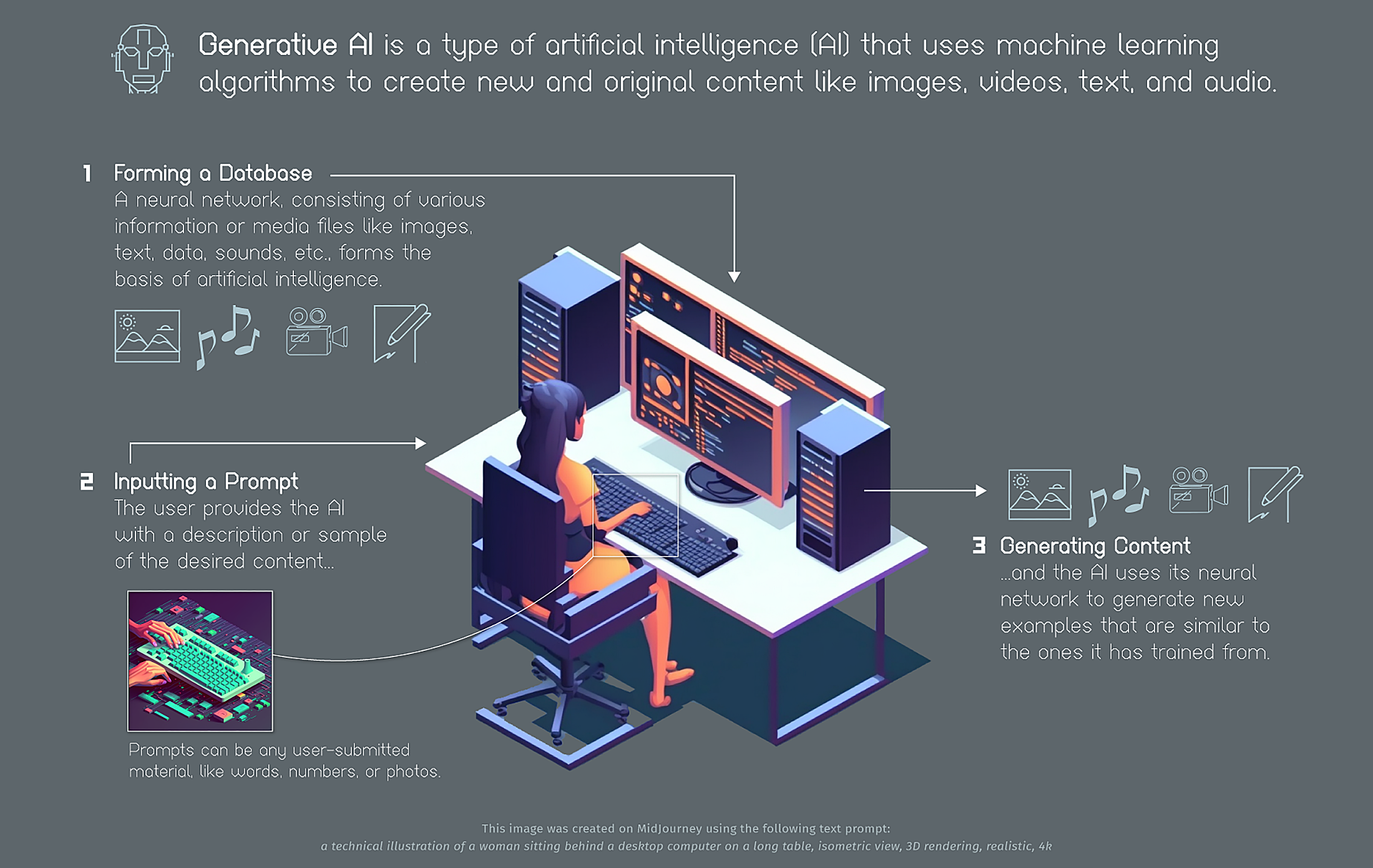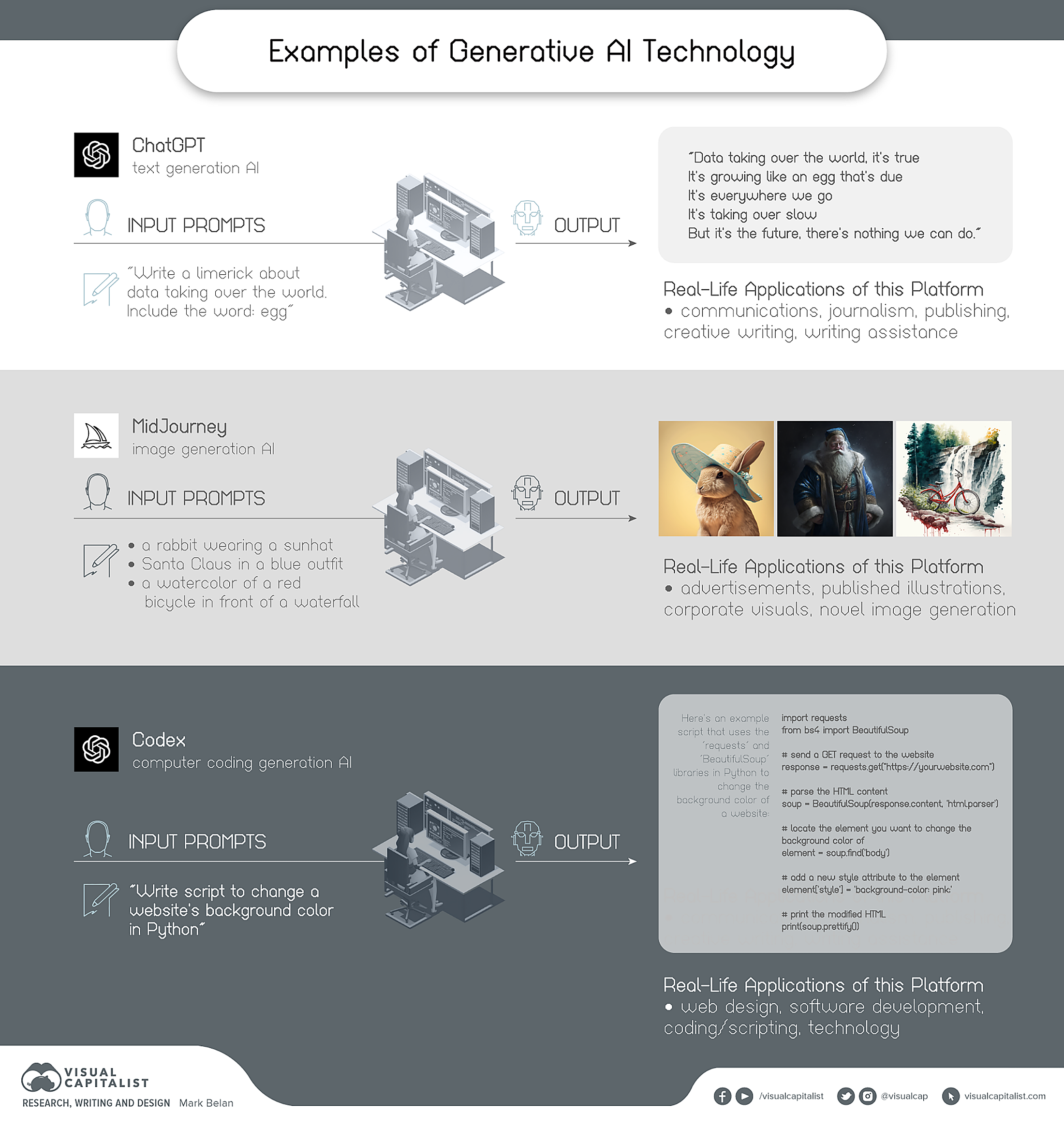After years of research, it appears that artificial intelligence (AI) is reaching a sort of tipping point, capturing the imaginations of everyone from students saving time on their essay writing to leaders at the world’s largest tech companies. Excitement is building around the possibilities that AI tools unlock, but what exactly these tools are capable of and how they work is still not widely understood.
We could write about this in detail, but given how advanced tools like ChatGPT have become, it only seems right to see what generative AI has to say about itself.
Everything in the infographic above – from illustrations and icons to the text descriptions—was created using generative AI tools such as Midjourney. Everything that follows in this article was generated using ChatGPT based on specific prompts.
Without further ado, generative AI as explained by generative AI.

Generative AI: An introduction
Generative AI refers to a category of artificial intelligence (AI) algorithms that generate new outputs based on the data they have been trained on. Unlike traditional AI systems that are designed to recognize patterns and make predictions, generative AI creates new content in the form of images, text, audio, and more.
Generative AI uses a type of deep learning called generative adversarial networks (GANs) to create new content. A GAN consists of two neural networks: a generator that creates new data and a discriminator that evaluates the data. The generator and discriminator work together, with the generator improving its outputs based on the feedback it receives from the discriminator until it generates content that is indistinguishable from real data.
Generative AI has a wide range of applications, including:
- Images: Generative AI can create new images based on existing ones, such as creating a new portrait based on a person’s face or a new landscape based on existing scenery
- Text: Generative AI can be used to write news articles, poetry, and even scripts. It can also be used to translate text from one language to another
- Audio: Generative AI can generate new music tracks, sound effects, and even voice acting

Disrupting industries
People have concerns that generative AI and automation will lead to job displacement and unemployment, as machines become capable of performing tasks that were previously done by humans. They worry that the increasing use of AI will lead to a shrinking job market, particularly in industries such as manufacturing, customer service, and data entry.
Generative AI has the potential to disrupt several industries, including:
- Advertising: Generative AI can create new advertisements based on existing ones, making it easier for companies to reach new audiences
- Art and Design: Generative AI can help artists and designers create new works by generating new ideas and concepts
- Entertainment: Generative AI can create new video games, movies, and TV shows, making it easier for content creators to reach new audiences
Overall, while there are valid concerns about the impact of AI on the job market, there are also many potential benefits that could positively impact workers and the economy.
In the short term, generative AI tools can have positive impacts on the job market as well. For example, AI can automate repetitive and time-consuming tasks, and help humans make faster and more informed decisions by processing and analyzing large amounts of data. AI tools can free up time for humans to focus on more creative and value-adding work.

How this article was created
This article was created using a language model AI trained by OpenAI. The AI was trained on a large dataset of text and was able to generate a new article based on the prompt given. In simple terms, the AI was fed information about what to write about and then generated the article based on that information.
In conclusion, generative AI is a powerful tool that has the potential to revolutionize several industries. With its ability to create new content based on existing data, generative AI has the potential to change the way we create and consume content in the future.
This article was reprinted with permission of the World Economic Forum, where it was originally published.






